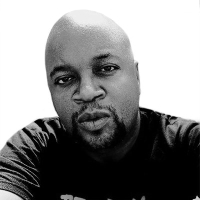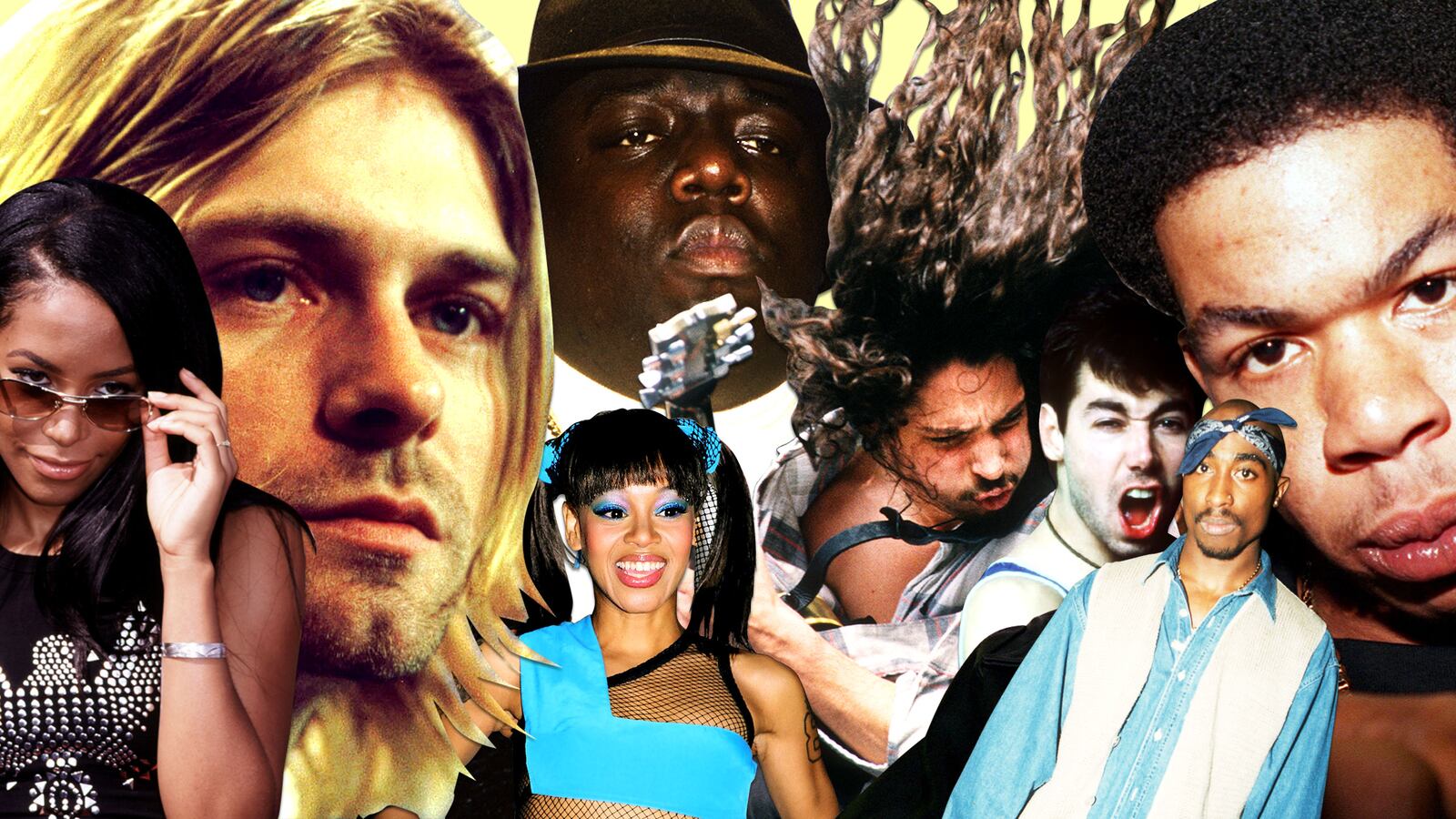Former Bad Boy star Craig Mack’s death on March 12, reportedly from congestive heart failure at the age of 46, was a shock to so many fans of the Brentwood-born rapper who’d shot to stardom in 1994 on the success of his single “Flava In Ya Ear” and its classic remix. His former producer Alvin Toney and longtime friend, fellow hip-hop veteran Erick Sermon, shared that Mack had heart problems that finally claimed his life but he’d spent his last years shunning the spotlight and keeping his problems away from media attention.
The death of Craig Mack joins what seems like a litany of fallen artists who defined so much of mid-’90s music. For a certain age group, 1994-1996 were epochal years—that period when genres like “alternative rock” and “gangsta rap” were firmly set in the mainstream, having broke through big in the early 1990s. R&B had undergone a metamorphosis, as well, with the decline of new jack swing and the rise of an even more street-oriented sensibility via urban acts like Mary J. Blige and Jodeci. But if you remember those years vividly, it’s hard not to feel a part of that era has been gutted by early death. Hell, that period was defined by martyrdom, to a certain degree.
Of course, the biggest popular music-related story of 1994 was the April 5 suicide of Kurt Cobain that year. The Nirvana frontman had spent more than two years as the most hyper-scrutinized rocker on the planet, and the pressures of fame and his own deteriorating emotional and physical state led him down a dark path that ended in heroin and a heartbreaking note to his fans. The suicide came just a few months after the release of In Utero, Nirvana’s third album, and their soon-to-be-acclaimed live album MTV Unplugged In New York would be released in November. With music videos for songs like “All Apologies” and “Heart-Shaped Box” in steady rotation on MTV, Cobain’s death at 27 became a flashpoint for rock music and youth culture. While at the time, he seemed to be among the last of the rock stars that truly mattered, in the years since, so many of his contemporaries have also left this world far too soon, and Cobain is now one of several of the lost voices of the mid-1990s.
Songs like “Black Hole Sun” by Soundgarden and “No Excuses” by Alice In Chains were fixtures on the rock charts in 1994, with the former becoming one of the most iconic music videos of its era. Both legendary bands have since lost their beloved frontmen: AIC’s Layne Staley overdosed in 2002 after a slow descent into addiction, and Chris Cornell of Soundgarden shockingly committed suicide in spring 2017 at the age of 52. Another major rock hit of 1994 was the No. 1 alt-rock single “Zombie” by the Cranberries, whose frontwoman Dolores O’Riordan died just this January.
In hip-hop, the grim shadow of the overhyped East Coast/West Coast feuding tends to suffocate the rest of the genre’s ’90s history. The chaos and violence swirling around rapper Tupac Shakur came to a head in 1994, as Shakur was shot leaving Quad Studios in Manhattan that November. His soon-to-be-rival the Notorious B.I.G. had emerged as a star that year, on the heels of Biggie’s No. 1 rap hit “Juicy” and the Top 10 smash “Big Poppa.” 2Pac had spent most of 1994 making headlines for his behavior, but he’d also starred in the cult hit Above the Rim and released an album with his group Thug Life. That album included the single “Pour Out A Little Liquor,” which wasn’t a major chart hit, but would become one of Pac’s most inescapable tracks throughout the year. Of course, both 2Pac and Biggie would be gunned down in the prime of their careers in 1996 and 1997, respectively. But again, there are so many more ’90s hip-hop stars we’ve lost over the years.
Heavy D had two of the biggest rap hits of his career with 1994’s “Nuttin’ But Love,” an infectious pop single from his album of the same name, and the follow-up track “Got Me Waiting,” which topped the rap charts. The “Overweight Lover” passed away in 2011 at 44 from a pulmonary embolism. Gang Starr was never an act that saw the kind of crossover chart success enjoyed by a Notorious B.I.G. or a Heavy D, but the duo’s hit 1994 single “Mass Appeal” would become an underground hip-hop anthem in 1994. Frontman Guru died in 2010 after a heart attack and coma—he was 43.
Similar to Gang Starr, UGK was a beloved and influential underground hip-hop act who saw some fairly high profile success in 1994. The Dirty South duo of Bun B and Pimp C released one of their signature singles in “Front Back, Side to Side” in 1994, from their second album Super Tight. Sadly, Pimp C was found dead in his hotel room in December 2007, the result of both his sleep apnea and use of promethazine. Meanwhile hip-hop crooner Nate Dogg, whose hit “Regulate” with Warren G was a monster hit of 1994, (peaking at No. 2 that year), died in 2011 after several strokes and a lengthy hospitalization, while the Beastie Boys’ Ill Communication was one of the albums that cemented the trio’s status as ’90s defining artists but the group officially disbanded after the death of founding member MCA in 2012, who passed after a lengthy battle with cancer.
The 2016 death of Phife Dawg, aka Malik Taylor, sparked an outpouring of grief from fans of A Tribe Called Quest. Back in 1994, Tribe was hip-hop’s most critically-acclaimed act following the success of their third album Midnight Marauders, and the single “Electric Relaxation” was one of the Queens crew’s most beloved. Prodigy of Mobb Deep would become one of the game’s most lauded lyricists in the wake of that crew’s sophomore album, The Infamous, which included the classic single “Shook Ones, Pt. 2,” a smash on East Coast rap radio in early 1995. Prodigy choked to death in 2017 at age 43 after falling ill following a performance. Wu-Tang Clan wild man Ol’ Dirty Bastard also became a breakout star in early 1995, with hit singles like “Brooklyn Zoo” and “Shimmy Shimmy Ya,” solidifying his star power and zany persona. Ol’ Dirty tragically died in 2004, overdosing on cocaine and tramadol just days before his 36th birthday.
R&B, superstar trio TLC would release one of the decade’s biggest albums in 1994’s Crazy Sexy Cool, with singles like “Creep,” “Red Light Special” and “Waterfalls” becoming inescapable on radio and on video networks like MTV and BET throughout 1994 and 1995. The trio’s run as a chart-topping act came to a heartbreaking end with the 2002 death of Lisa “Left Eye” Lopes, who was killed at 30 in a car accident in Honduras. Similarly, solo breakout star Aaliyah saw her first chart successes in 1994 with her hit single “Back & Forth” and a cover of the Isley Bros “At Your Best (You Are Love).” The singer’s career would only blossom from there, as she would become a consistent chart presence and burgeoning film star into the early 2000s, before the fateful 2001 plane crash in the Bahamas that killed her and eight others. Though never a superstar on the level of Left Eye and Aaliyah, singer-songwriter Kenny Greene was nonetheless an important figure in R&B circa 1994. Greene’s trio Intro had enjoyed modest success with their debut album in 1993 and in 1994, their cover of Stevie Wonder’s classic “Ribbon In the Sky” was a favorite on urban radio. Greene, who’d also written songs for Mary J. Blige and would go on to collaborate with 98 Degrees and Will Smith, died in 2001 from AIDS complications.
Obviously, death doesn’t care about hit records, and there is no grand conspiracy surrounding the passing of artists at a relatively young age. But for a generation of music fans, it’s sobering to think of so many voices that defined the mid-’90s who have been forever silenced.
If you were in your teens or twenties, watching the popular music video shows or blaring the radio during those years, there’s a large chunk of your youth that’s represented by that music. These were the artists that led to your love of music, or maybe they simply provided the sonic backdrop for so much of your adolescence and young adulthood. It’s easy to wax nostalgic about that part of our lives, and romanticize the tunes that defined us in our younger days. But in considering how many are gone, remember that there are so many legendary artists from that era who are still with us, still performing, still recording. Go check out a show, stream their latest release or revisit a classic. It’s cliché to say “Give me my flowers while I can still smell ’em,” but it’s pertinent. Craig Mack’s death this week was sad news, and it’s sad to think that his legacy as one of the architects of Sean “Diddy” Combs’ Bad Boy empire was largely forgotten by the general public until his untimely passing. These are the artists that shaped our youth and embodied an era. Let’s show them how much we appreciate that. While they can still hear us.






